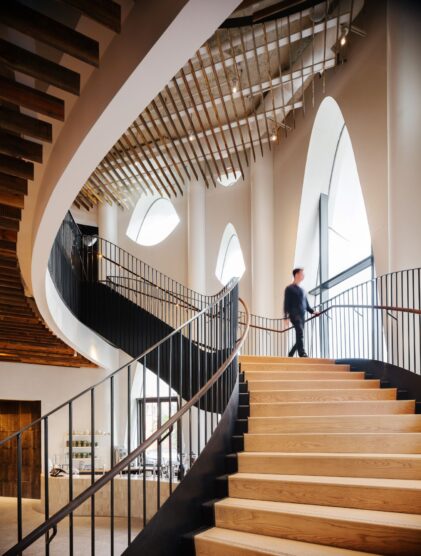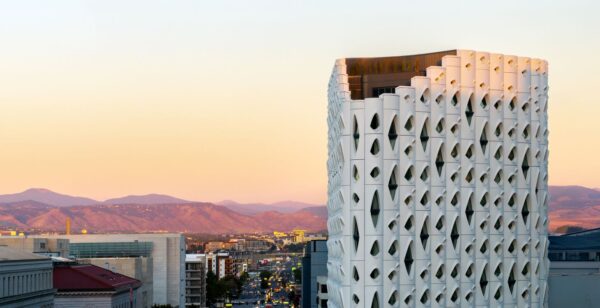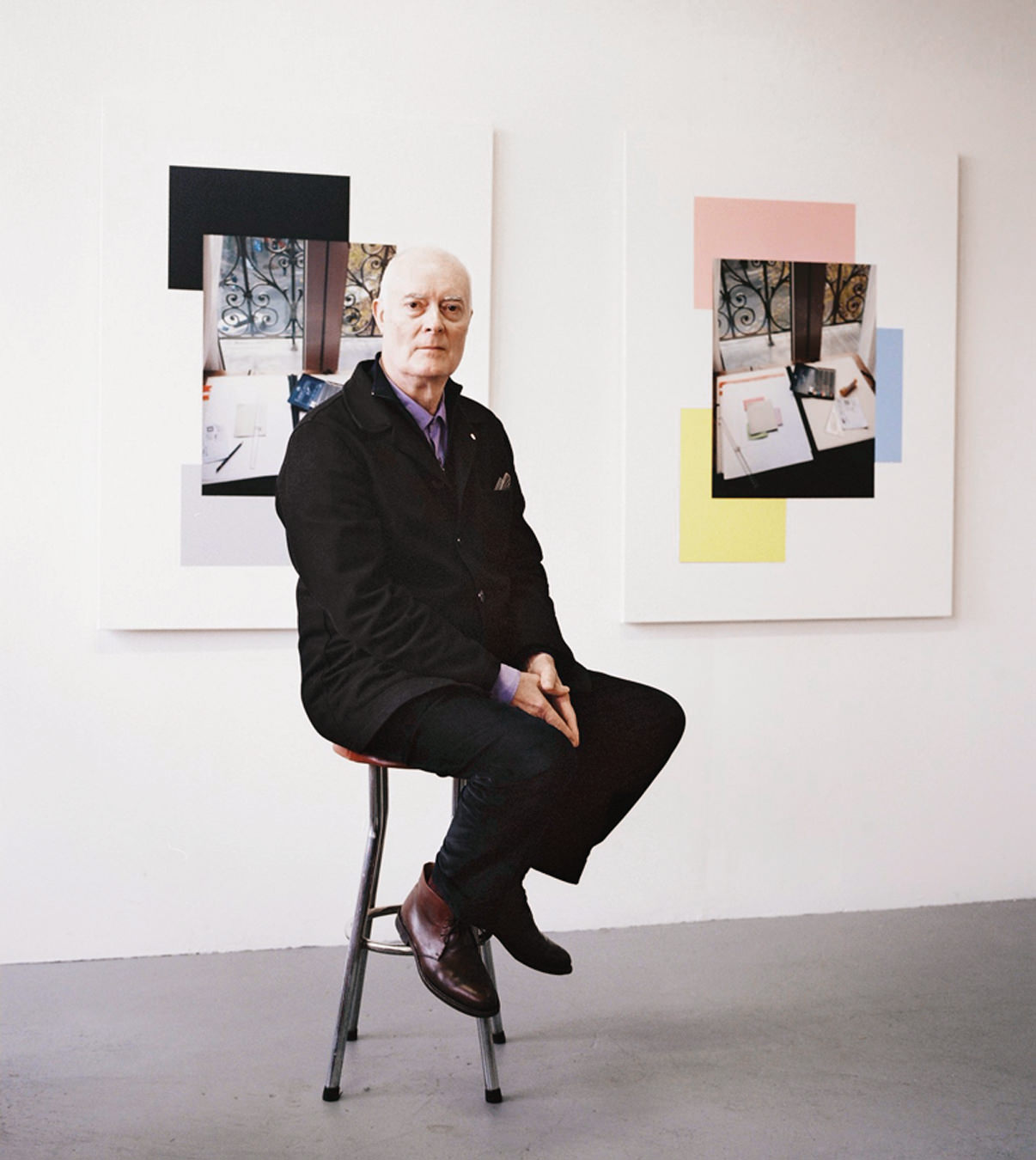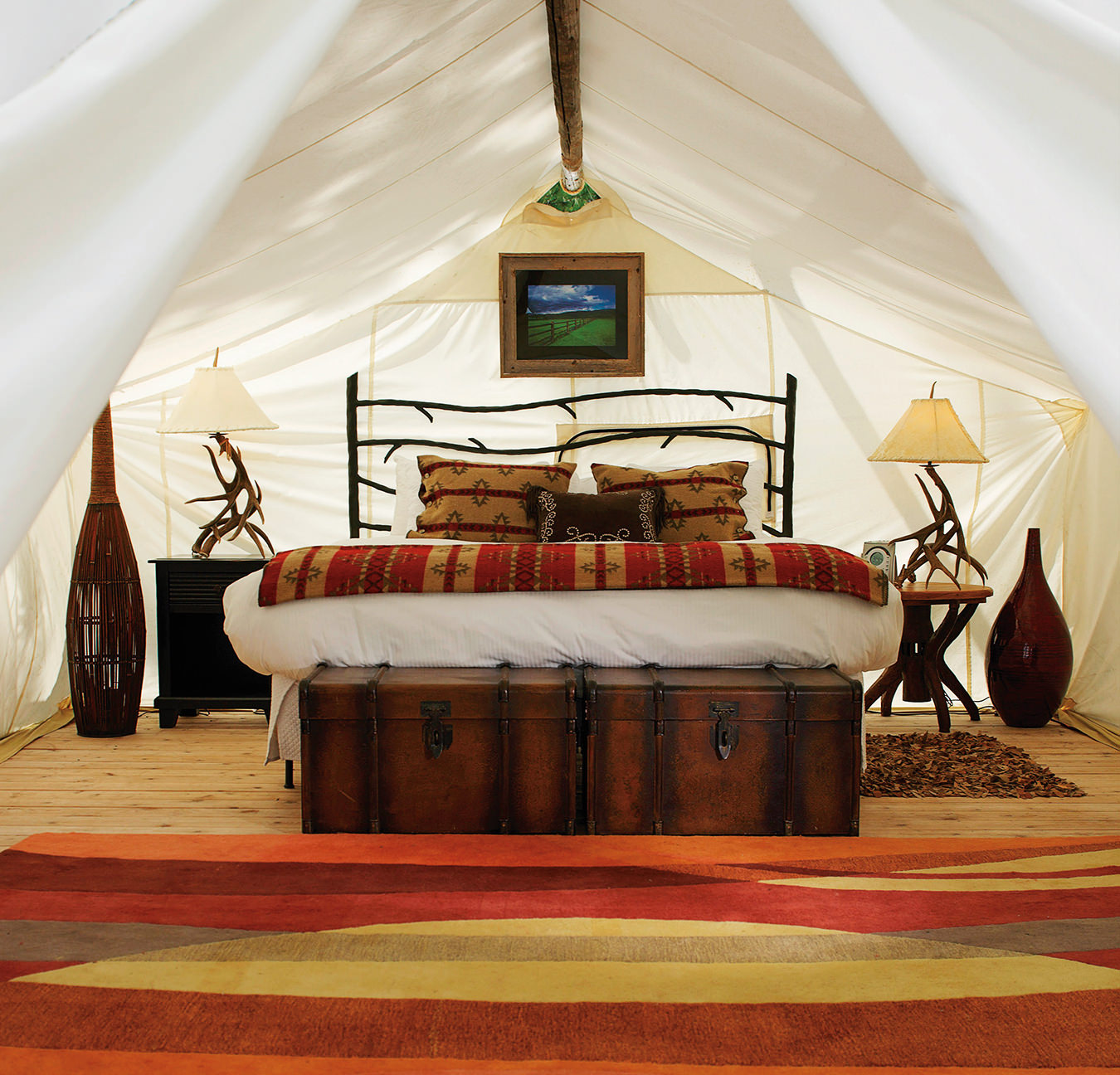New Hotels and Planned Communities Are Designing a Sustainably Focused Future
On the edge of Denver’s central Civic Center Park and State Capitol building, Populus, the city’s newest stylish hotel property, strikes an impressive profile as its triangular white façade rises toward the bright blue Colorado sky.
Mindful travellers visiting the Mile High City can look forward to bedding down in one of 265 climate-conscious rooms. According to Jon Buerge, president of Urban Villages, the sustainable development company behind Populus, carbon positivity means “sequestering more carbon out of the atmosphere than would ever be emitted over the lifetime of the project.”
The term carbon positivity is a bit of a misnomer. Populus’s carbon footprint will be mitigated through forest management and regenerative agricultural partnerships whose actions are more accurately termed carbon negative: sequestering more carbon than is emitted by the building’s construction and operation throughout its lifecycle.
Proponents have already planted 70,000 spruce trees throughout Colorado’s National Wilderness Preservation System to offset emissions accrued during the hotel’s construction. One spruce tree will be planted for every guest that stays at the hotel, part of its One Night, One Tree program, in partnership with One Tree Planted and the National Forest Foundation. Over 30 years, that equates to more than half a million trees.
Buerge called upon the design expertise of the award-winning Studio Gang, founded and led by Jeanne Gang, a MacArthur Fellow and The Wall Street Journal’s 2022 Architecture Innovator of the Year.

Studio Gang’s biophilic design draws from the growth processes of Colorado’s native aspen tree (Populus tremuloides), an instantly recognizable symbol of the state. The hotel’s aspen-eye windows, resembling the tree’s iconic knots, change in size and shape to reflect the public or private nature of various spaces. Around town, the hotel’s façade is compared to, not unkindly, a cheese grater.
“It’s a very interesting project,” says Adam Rysanek, associate professor at the School of Architecture + Landscape Architecture at UBC, one that is “pushing the needle in the right direction.”
The drive toward more sustainable construction and carbon positive projects has been growing for decades and is not limited to the hospitality industry. In a departure from the company’s iconic glass box retail outlets, Apple has just opened its first mass-timber, biophilic design store at Miami Worldcenter, using regionally sourced timber and including a densely vegetated interior space running on 100 per cent renewable energy.
In Sweden, mass-timber developments have been sprouting up from its boreal forest for several years, including the country’s tallest wooden hotel in Skellefteå and what will be the world’s largest city made entirely of wood. Scheduled for completion in 2027, Stockholm Wood City will contain 2,000 homes and 7,000 office spaces.
Mass-timber construction is seen by eco-conscious European and North American designers as a way to reduce the 39 per cent of greenhouse gas emissions emitted by buildings. According to a 2020 study by Aalto University and the Finnish Environment Institute, building with wood instead of concrete and steel in 80 per cent of new buildings would help offset half of Europe’s construction industry emissions.

Using timber and replenishing woodlands through intensive reforestation has been ongoing for decades in Canada and Sweden, but the practicality of universally scaling up those efforts to the level needed presents real challenges, according to Rysanek.
The ability of expanding tree planting to offset the construction and lifetime emissions of tens of thousands of buildings per year is challenging, and “unfortunately, it’s not like there’s an easy switch,” he says.
He points to a surprising advancement in Populus’s design that can be immediately emulated by both designers and developers. By avoiding on-site (underground) parking, the development has taken a vital step toward reducing carbon-intensive below-grade excavation and construction and is “one of the most important things we need to do.”
These new models of environmentally conscious projects are inspirational and raise the bar for designing a carbon positive future in the hospitality space and beyond.




